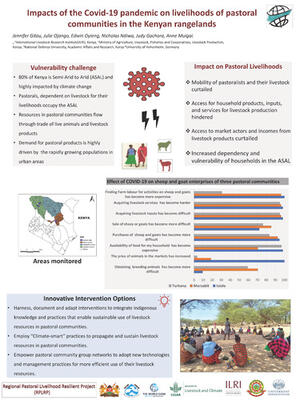
Application of system dynamics modelling in the analysis of economic impacts of Rift Valley fever: A case study of Ijara County, Kenya
Abstract
Assessment of impacts of livestock diseases tends to be rather challenging due to several reasons including complexity of the livestock value chains themselves; interactions of livestock with other sectors of the economy; short term versus long term impacts of diseases; and feedback reactions by value chain actors to risks posed by a disease including control measures imposed by authorities to control disease spread. Methodologies used for the assessment of impact of livestock diseases should also lend themselves to scenario analyses of different policy interventions and their predicted ex-ante impact on the system over time. To address these problems in the case of Rift Valley fever (RVF), this study constructs a system dynamic (SD) model that can be used for ex-ante analysis of impacts of different prevention strategies.
Results show that vaccination under the business-as-usual strategy is associated with minimal benefits in terms of lessening the level of erosion of stocks of animals, reduction in number of animal sales, together with incomes earned by producers from the sale of animals if outbreaks occur. On the other hand, adoption of an annual vaccination program through which at least 60% of susceptible animals are immunised each year can mitigate occurrence of outbreaks. Reduction in the amount of time that lapses between the outbreak of the disease and initiation of the vaccination campaigns is associated with reduced erosion of animal stocks together with relatively higher level of animal offtakes and income for producers.
Citation
Wanyoike, F., Dizyee, K., Bett, B. and Rich, K. 2021. Application of system dynamics modelling in the analysis of economic impacts of Rift Valley fever: A case study of Ijara County, Kenya. Rift Valley fever vaccination project report. Nairobi, Kenya: ILRI.










